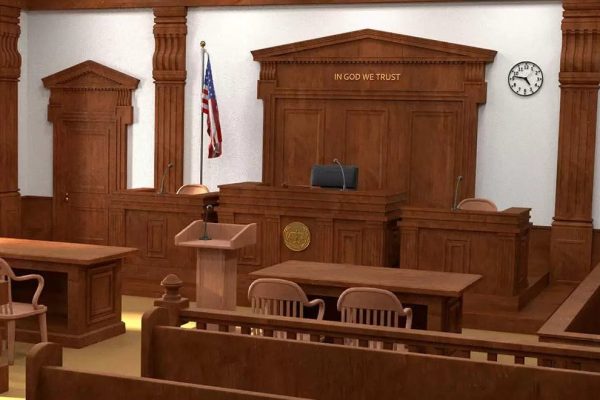With total integrity, Mr. Daly makes extensive research on immigration issues and formulates different strategies to generate a successful outcome for the cases that he handles.
Over 25 Years of
Experiences
Denver immigration attorney Mark C. Daly, is OF Counsel and Founder of Pro Forma Immigration Attorneys. Mark C. Daly is a member of AILA since 1995 and has over 25 years experience in immigration law Renée Taylor offers professional legal services limited to matters of U.S. Immigration. Under the leadership of Renée Taylor, Pro Forma Immigration Attorneys, serves all 50 states and embassies worldwide. Renée Taylor is a member of AILA.
CHECK US OUT ON YouTube!
We have personally helped thousands of people like you get an answer to those complicated issues that keep you up at night. We have over a million views on the usimmigrationlawyer channel on YouTube.

Let Our Experience Be Your Guide
The 15 minute telephone consultation with a Denver immigration attorney is a great value for $100. We believe in providing you, the public of all nations and backgrounds and diversity in person, thought and deed, with easy access to immigration law advice. This is how we provide our “low-bono” service to the Colorado community and, literally, all around the world. There is no obligation to hire us, and we will give you the best advice we can in 15 minutes. We know how hard it is for you to get a simple answer to a simple question from an immigration attorney, immigration court, USCIS, U.S. Department of State National Visa Center or U.S. Embassy. I have personally helped thousands of people like you get an answer to those complicated issues that keep you up at night. We have over a million views on the usimmigrationlawyer channel on YouTube.
Since 1995, Mark has been focusing his professional efforts on immigration law. Mark has always loved being an immigration attorney. Mark has a deep commitment to helping immigrants, their families and employers by providing services that provide you with extremely high value for reasonable fees and our Client Testimonials indicate our success in meeting and exceeding our client’s expectations. Under Renée’s leadership all of Pro Forma’s services will continue to have our unique Pro Forma performance guarantee: a 10% money back guarantee if you are not satisfied because of errors, omissions or poor customer service, Pro Forma will refund your money after receiving your request in writing explaining your dissatisfaction. We also provide an Integrity Refund whereby if we break a promise to you – no matter how small – we pay you $100.
Since 2025, Renée Taylor has brought her own commitment and leadership so that all of Pro Forma’s services will continue to have our unique Pro Forma performance guarantee: a 10% money back guarantee if you are not satisfied because of errors, omissions or poor customer service. We also provide an Integrity Refund whereby if we break a promise to you – no matter how small – we pay you $100.

Adjustment of Status
Adjustment of status is the term used to process for permanent residency here in the United States. Often I am asked these types of questions in my consultations with clients:
Fiancee Visas
I hear these questions all the time: ” How can I get a fiancée visa?”, “How long is the wait to get a fiancée visa?” “Do I really need an immigration attorney to get my fiancée a visa?”.
Intracompany Transfer
Many calls come in from businesses and entrepreneurs who want to open companies in the United States and staff them themselves or with workers from their foreign offices: ”
E-2 Treaty Investor Visas
When I get calls from people asking about investor visas, – E-1 or E-2 visas – they are usually here on B-1 or B-2 tourist visas: “Can I start up a business and get a green card?”,.
Citizenship and Naturalization
USCIS provides a great deal of information on how to become a citizen on its website. Many of the questions I hear are: “I lost my green card – can I file for citizenship?”
Criminal Defense for Immigrants
Clients who have criminal records range from speeding tickets to crimes of violence and controlled substances, and everything in between. They will ask me:
Marriage & Family Immigration
Many of my free telephone consultations begin the same way: “How can I get my wife a green card?” “How can I get permanent residency for my husband?”
H-1B Temporary Professionals
Many callers who inquire about H-1B visas have done a great deal of research on the subject, so their questions tend to be very specific: “I want to change employers,
Headquarters
Our company located in the heart of the financial district in New York City
Wall Street
New York, NY 10005
info@consulting.com
T : +1 (333) 444 4040
F : +1 (444) 777 9988

Attorneys
Lorem ipsum dolor sit amet, consectetur adipiscing elit. Ut elit tellus, luctus nec ullamcorper mattis, pulvinar dapibus leo.

Karin Burrows
Founding Partner

William Laboy
Co-Managing Partner

Paul Hoff
Co-Managing Partner

Louise Andre
Senior Partner
Please fill out the form below and one of our attorneys will contact you.
Contact Us
Click here for our Personal Immigration Questionnaire Form or our Professional Immigration Questionnaire Form to complete and upload to me on our payment portal. This helps me give you the best advice on your immigration matter. So schedule yourself for your $100 15 minute telephone or zoom consultation today with a Denver Immigration Attorney. Our Denver office is located at 1624 Market Street, Suite 202, Denver, Colorado 80202 our offices are easily reached via the free Mall Ride. Our Denver office is accessible from I-25, I-70, Aurora, Lakewood, Arvada, Commerce City, the Denver Tech Center, Westminster, and Thornton.
I also train new immigration attorneys.
Thank you for your interest in our firm. Mark C. Daly
Call or email now for a $100 15 minute immigration consultation or a $400 1 hour consultation with Mark C. Daly, a licensed immigration attorney with over 25 years of experience in immigration law.
We provide a 2 hour online instructional consultation for $949 to help you prepare and file your own immigration case. Visit our Step By Step Immigration Forms website for more information.
CALL US TODAY! (303) 481-3494 | 15 MINUTE CASE CONSULTATION



